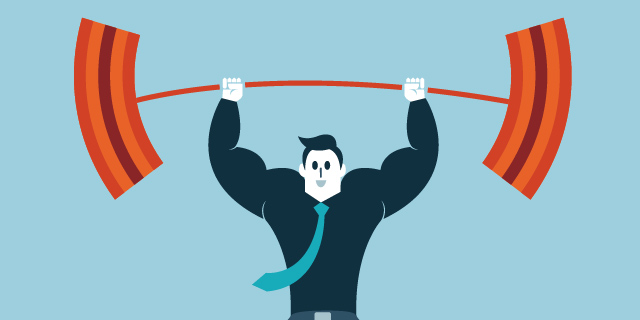What’s the Right Wellness Program for Your Brand?
What’s the Right Wellness Program for Your Brand?

The New Rules of Wellness Programs
The EEOC recently issued new rules for employer wellness programs that have made a big splash in the media. With all the recent buzz around wellness, we began thinking about the overall value of these programs and how to build programs, as Obama hopes, that benefit employers and employees alike.
What are the best practices for businesses as they incorporate wellness programs into their benefits packages? How can employers encourage wellness, while simultaneously respecting and protecting individual’s personal privacy and making sure employees never feel discriminated against based on wellness?
Shifting Expectations
In today’s ever-competitive market, employee wellness programs are expected. As a result, businesses everywhere are working to create workplace environments that foster wellness and actually work – benefiting both employees and employers. At their best, these programs can help employees deal with stressful situations, increase productivity, lower overall healthcare costs, increase happiness, and improve long-term health.
The wellness industry is booming. Experts have predicted that health and wellness is the next trillion-dollar industry. Innovative health, fitness, and happiness startups are everywhere. With this influx of health technologies, like wearables and digital health apps that give instant access to health information, people are paying more attention to how they eat, move, work, and feel. And corporate companies everywhere are transforming workplace wellness.
The problem is that wellness as an offering is a tricky business proposition. Wellness means something different to every individual, so an employee wellness program can’t be everything to everyone. It can’t be boiled down to a new health gadget or a one-size-fits-all benefit. Traditional models no longer cut it. In fact, the old models that focused only on physical health and punished employees never produced the benefits employers hoped for.
So how can your business design a wellness program that benefits employers and employees?
Instead of focusing on creating the perfect, optimized system of punishments and rewards meant to cut employer costs, create a wellness program that is:
- Flexible: Since every individual is different, the program needs to be able to adapt to different circumstances and changes. A rigid program feels…just that, rigid. Flexibility gives employees the power to shape their own program, knowing what works for them. And punishing employees does not work. Instead, work to build a program that is accommodating. An employee’s needs will change, and your program needs to have the pliancy to change with them. This kind of flexibility encourages improvement in a more long-term, sustainable manner.
- Adaptable: Healthcare has changed drastically in the last decade. Now, 20% of smartphone owners have at least one health-app on their phone. 40% of millennials own a wearable device. Nutrition and exercise are perceived as top influences on health and wellness, and routine healthcare is getting pushed aside by many, especially younger generations. Across the board, people are more concerned with ideas like work-life balance and they worry about stress levels and time spent sitting behind the screen. Trends in wellness will only continue to advance, and companies that embrace these trends and build a workplace geared towards an up-to-date conception of wellness will thrive.
- Tailored to the Individual: More and more, people want and expect wellness programs that feel like they were made specifically for them. Empathy plays a large role here. Be human. Make sure your program treats each individual as an individual. By recognizing differences and working to customize programs so they work best for each person, your program and the people within it will flourish. Just as everyone has different work styles, everyone has different wellness styles. Take the steps needed to understand the wellness styles of each individual employee so that you can make your program work for everyone.
- A Feedback System: In order to create a flexible, adaptable, and tailored program, you need a feedback loop. Build in consultations, check-ins, goal-creating meetings, or any means by which important questions from employees can be discussed with them. Ask: What do you need? How is this program working for you? What can we do better? How can we help you get the most out of this program? In addition, set up a system for measuring the effectiveness of your program on a higher level. Decide what wellness measurements are important and align with your values, be it productivity, happiness, sick days, etc., and track these measurements so you can see where your program is working and where it is not.
Aligning your wellness program to your brand
If you place your focus on the individual person and their needs, your wellness program will help recruit and retain top employees. Your company will build a program that fosters a culture of wellness in an empathetic way. And happy, productive, healthy, and motivated employees who feel supported by your program will help your business thrive. In the end, your employees’ wellness matters to the success of your business. So make sure your employer brand incorporates a wellness program that is flexible, adaptable, customizable, and open to feedback. And when you do, your brand, your business, and your employees will thrive.
Emotive Brand is San Francisco branding agency.






